Steph is a Ph.D. student at Royal Holloway working with Matthew Thirlwall (see her research profile here and blog here).
Shetland lies around 150km north of mainland Scotland and has spectacularly diverse geology for such a small archipelago. This is one of the main reasons I chose to undertake a masters, and now PhD trying to understand the timing of metamorphic events within the Caledonian Terranes of the Islands. I went to Shetland in 2013 with Anna Bird, to collect samples for geochemical and geochronological analysis.
The main aims for the trips were to collect garnetiferous samples for Sm-Nd and Lu-Hf geochronology. This is a great technique to use if you want to understand the timing of peak metamorphism within rocks that have undergone more than one period of garnet growth, as it is possible to distinguish, and more importantly separate and date, different growth layers within the mineral. This is really important for Shetland, where the limited modern geochronology has shown that these rocks have been affected by at least three distinct orogenic events1,2.
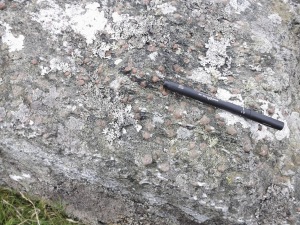 |
| Garnet amphibolite |
The geology of Shetland is divided by the crustal scale transcurrent Walls Boundary Fault, the northern equivalent of the Great Glen Fault that separates the Northern Highlands from the Grampian Highlands in Scotland. The Walls Boundary Fault crops out at Ollaberry, in western Mainland Shetland, where it separates highly deformed metasediments from the late-Caledonian Graven Complex granodiorite.
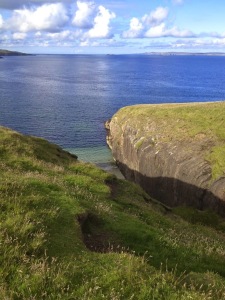 |
| Walls Boundary Fault |
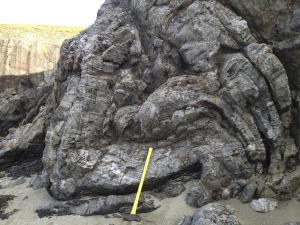 |
| Wall Boundary Fault fold |
During my Masters work, I focused on sampling to the east of the Walls Boundary Fault, so I decided it would be an interesting comparison to focus on Caledonian rocks from the west side of Shetland on my trip with Anna. Due to the hardness of many of rocks we sample, we have to use a combination of a sledgehammer and a ‘normal’ geological hammer in order to collect enough material for analysis. This obviously has the disadvantage of having to carry a rather large sledgehammer around, but it’s quite a fun activity, and there are always a few raised eyebrows from curious locals when two women are trudging around with a very large hammer and sacks full of rocks!
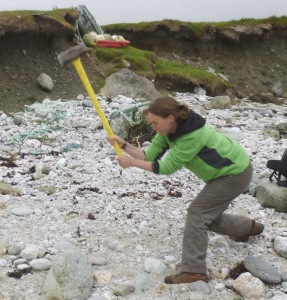 |
| Steph with sledge |
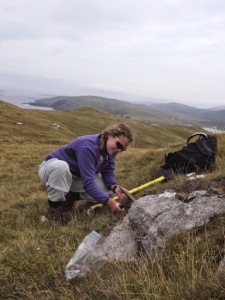 |
| Anna ‘hammertime’ Bird |
One of the areas we focused on most extensively was the northernmost tip of Mainland Shetland, North Roe. This is one of the few places in Shetland where the equivalent of the Archaean Lewisian Gneisses has been proposed to crop out. I want to understand how these rocks in Shetland relate to the Lewisian in Scotland, so I collected samples across a systematic traverse of this beautiful stretch of coastline.
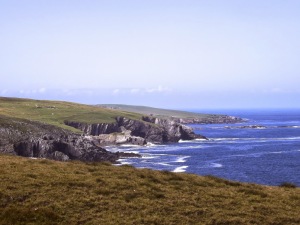 |
| North Roe cliffs |
Highly strained felsic gneisses dominate the geology of North Roe, but there is also volcanism related to the closure of the Iapetus in the Silurian/Devonian, as shown by these Late-Caledonian pink micro-granite intrusions cross-cutting the grey Archaean gneisses.
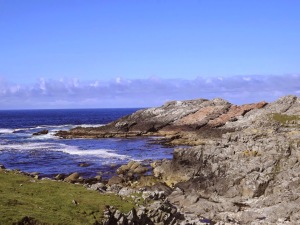 |
| North Roe pink dykes |
The beautiful cliffs of Eshaness are also a remnant of this period of intense volcanism during Iapetus closure, and are closely related to volcanism of this age from mainland Scotland.
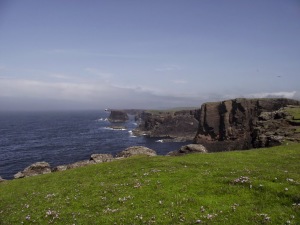 |
| Eshaness cliffs |
However, I’m more interested in rocks that were metamorphosed prior to the closure of the Iapetus, so we were on the hunt for rocks such as these deformed Moinian rocks on the Island of Yell, and this beautiful garnet-kyanite-biotite schist from further to the south in Yell.
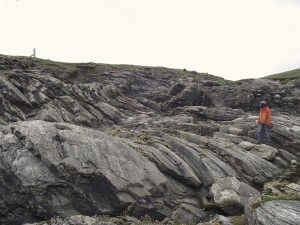 |
| Folded psammites on Yell |
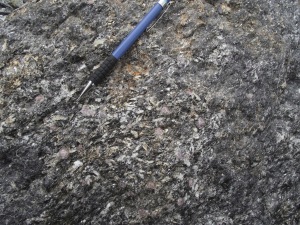 |
| Garnet-kyanite-biotite schist |
Of course, Shetland is famous for things other than it’s fantastic geology, and while we were there we tried to take in some of the Viking history, gorgeous wildlife, and enjoyed the way waiting for ferries between Islands meant everything happened at a more relaxed pace. Hopefully my work in the lab will help untangle a bit more of the fascinating history of these Islands, and give some much-needed insights into how Shetland fits into the Caledonides of the Northern Atlantic.
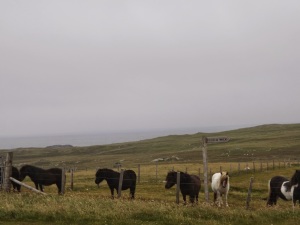 |
| Ponies |
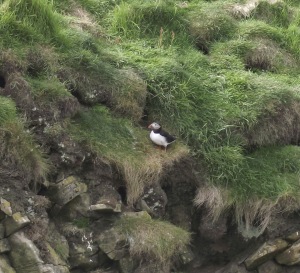 |
| Puffins |
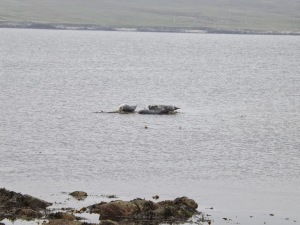 |
| Seals |
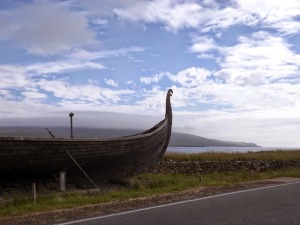 |
| Viking long boat |
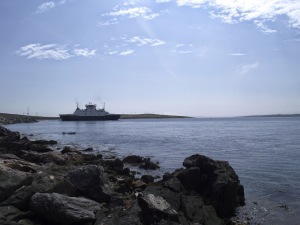 |
| Waiting for the Ferry |
References:
1. Cutts, K. A., et al, (2009) Journal of the Geological society, 166(6), 1033–1047.
2. Cutts, K. A., et al., (2011) Journal of the Geological Society, 168(6), 1265–1284.
![]() This work is licensed under a Creative Commons Attribution-NonCommercial-ShareAlike 4.0 International License.
This work is licensed under a Creative Commons Attribution-NonCommercial-ShareAlike 4.0 International License.
